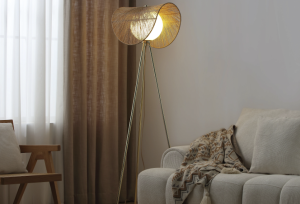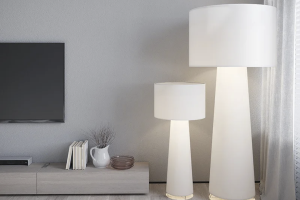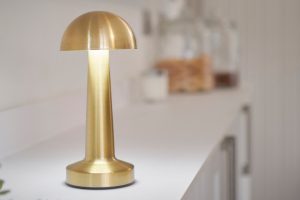Enhance Safety with Entrance Induction Night Light
6 min readEntrance induction night lights serve a crucial role in enhancing safety and security in residential and commercial properties. These lights illuminate entryways, pathways, and other critical areas, providing visibility during the dark hours when accidents are more likely to occur. The presence of adequate lighting can deter potential intruders, as well-lit areas are less appealing targets for criminal activity.
Moreover, these lights help guests and residents navigate their surroundings safely, reducing the risk of trips and falls. In essence, entrance induction night lights are not merely decorative; they are essential components of a comprehensive safety strategy. In addition to their safety benefits, entrance induction night lights contribute to the overall aesthetic appeal of a property.
A well-lit entrance can create a welcoming atmosphere, enhancing the curb appeal of homes and businesses alike. This is particularly important for commercial establishments, where first impressions can significantly influence customer perceptions. By investing in quality entrance induction night lights, property owners can strike a balance between functionality and visual appeal, ensuring that their spaces are both safe and inviting.
How Entrance Induction Night Lights Work
Entrance induction night lights operate using electromagnetic induction technology, which allows them to produce light without the need for traditional filaments or electrodes. This technology involves the use of a gas-filled bulb that is energized by an electromagnetic field, resulting in the production of light. The absence of filaments means that these lights have a longer lifespan compared to conventional incandescent bulbs, making them a more durable option for outdoor lighting.
The design of induction night lights typically includes a sealed glass enclosure that protects the internal components from environmental factors such as moisture and dust. This feature is particularly beneficial for outdoor applications, where exposure to the elements can lead to premature failure in other types of lighting. Additionally, many induction night lights come equipped with sensors that automatically turn the lights on at dusk and off at dawn, ensuring that they operate only when needed.
This automatic functionality not only enhances convenience but also contributes to energy efficiency.
Benefits of Using Entrance Induction Night Lights
One of the primary benefits of using entrance induction night lights is their energy efficiency. Compared to traditional lighting options, induction lights consume significantly less power while providing the same level of brightness. This efficiency translates into lower electricity bills for property owners, making them an economically viable choice in the long run.
Furthermore, the longevity of induction lights—often lasting up to 100,000 hours—means that replacements are infrequent, reducing both maintenance costs and waste. Another advantage is their ability to provide consistent illumination without flickering or dimming over time. This reliability is particularly important in high-traffic areas where visibility is paramount.
The steady light output ensures that individuals can navigate safely without the distraction or danger posed by inconsistent lighting. Additionally, many induction night lights emit a warm glow that enhances visibility while creating a pleasant ambiance, making them suitable for both functional and decorative purposes.
Factors to Consider When Choosing Entrance Induction Night Lights
When selecting entrance induction night lights, several factors should be taken into account to ensure optimal performance and satisfaction. One critical consideration is the brightness level, typically measured in lumens. Depending on the specific application—whether illuminating a residential front porch or a commercial entryway—the required brightness may vary significantly.
It is essential to assess the area that needs lighting and choose fixtures that provide adequate illumination without being overly harsh or glaring. Another important factor is the color temperature of the light emitted by the induction night lights. Color temperature is measured in Kelvin (K) and can range from warm yellow tones (around 2700K) to cool blue tones (above 5000K).
Warmer tones tend to create a cozy atmosphere, making them ideal for residential settings, while cooler tones may be more appropriate for commercial environments where clarity and alertness are prioritized. Additionally, considering the design and style of the fixtures can help ensure that they complement the overall aesthetic of the property.
Installation and Placement of Entrance Induction Night Lights
The installation and placement of entrance induction night lights are critical to maximizing their effectiveness. Proper positioning ensures that light is distributed evenly across entryways and pathways, minimizing shadows and dark spots that could pose safety hazards. Ideally, lights should be installed at a height that allows for optimal coverage without being obstructed by landscaping or architectural features.
For instance, mounting lights at least 7-8 feet above ground level can help achieve this goal. In terms of placement, it is advisable to install entrance induction night lights near doorways, along walkways, and at any points where visibility is essential for safety. Additionally, incorporating motion sensors can enhance functionality by activating the lights only when movement is detected.
This feature not only conserves energy but also provides an added layer of security by illuminating areas when someone approaches.
Energy Efficiency and Cost Savings of Entrance Induction Night Lights
Energy Efficiency
These lights consume significantly less energy than traditional incandescent or halogen bulbs while delivering comparable brightness levels. This efficiency translates into substantial cost savings over time, as lower energy consumption directly correlates with reduced electricity bills.
Long-Lasting Performance
Moreover, the longevity of induction night lights further contributes to their cost-effectiveness. With lifespans often exceeding 100,000 hours, these fixtures require far fewer replacements than conventional lighting options. This not only saves money on purchasing new bulbs but also reduces labor costs associated with frequent replacements.
A Financially Savvy Choice
When considering both energy savings and reduced maintenance expenses, entrance induction night lights emerge as a financially savvy choice for property owners looking to enhance their outdoor lighting solutions.
Maintenance and Care for Entrance Induction Night Lights
While entrance induction night lights are designed for durability and longevity, some maintenance practices can help ensure they continue to function optimally over time. Regular cleaning is essential to prevent dust and debris from accumulating on the fixtures, which can diminish light output and affect performance. A simple wipe-down with a damp cloth can often suffice; however, it’s important to ensure that the power is turned off before performing any cleaning tasks.
Additionally, property owners should periodically check for any signs of wear or damage to the fixtures or wiring. Although induction lights are generally resistant to environmental factors, extreme weather conditions can still impact their performance over time. If any issues are detected—such as flickering or failure to turn on—it may be necessary to consult with a professional electrician to assess and address the problem promptly.
Other Safety Measures to Complement Entrance Induction Night Lights
While entrance induction night lights play a vital role in enhancing safety around entryways and pathways, they should be part of a broader safety strategy that includes additional measures. For instance, installing security cameras can provide an extra layer of protection by monitoring activity around the property and deterring potential intruders. The presence of surveillance equipment can also offer peace of mind for homeowners and business operators alike.
Furthermore, maintaining clear pathways free from obstructions such as overgrown plants or debris is essential for ensuring safe navigation at night. Regular landscaping maintenance not only enhances the aesthetic appeal of a property but also contributes to overall safety by minimizing tripping hazards. Additionally, incorporating reflective materials or markers along walkways can further improve visibility during nighttime hours, complementing the illumination provided by entrance induction night lights.
In conclusion, entrance induction night lights are an invaluable addition to any property’s safety and aesthetic framework. Their energy efficiency, durability, and ability to enhance visibility make them an ideal choice for illuminating entryways and pathways while contributing to overall security measures. By considering factors such as brightness levels, color temperature, installation practices, and complementary safety measures, property owners can create well-lit environments that prioritize safety without sacrificing style or functionality.


